Abstract
A crucial first step in teaching and training the retarded and autistic is to develop and maintain eye contact with the therapist. Functional movement training (an overcorrection procedure) plus edibles and praise were compared with edibles and praise alone as a method of developing eye contact in three such children. In both conditions, the child was given food and praise when eye contact occurred within 5 sec of the therapist's verbal prompt: "Look at me." Functional movement training avoidance plus edibles and praise produced about 90% attention for the three children, while edibles and praise alone were less effective (eye contact never exceeded 55%). Functional movement training avoidance combined with edibles and praise appears to be an effective method of teaching eye contact and possibly other forms of instruction-following to behaviorally disordered children who are not always responsive to positive consequences.
Full text
PDF
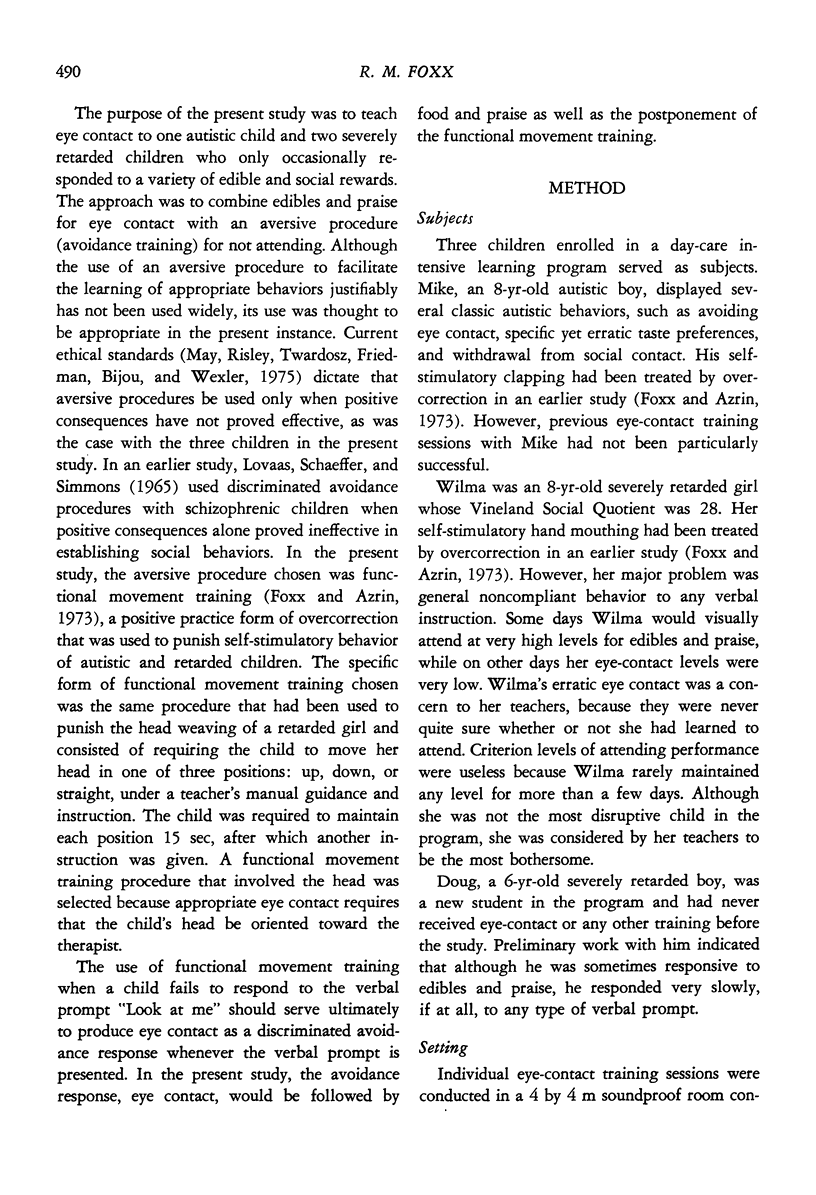
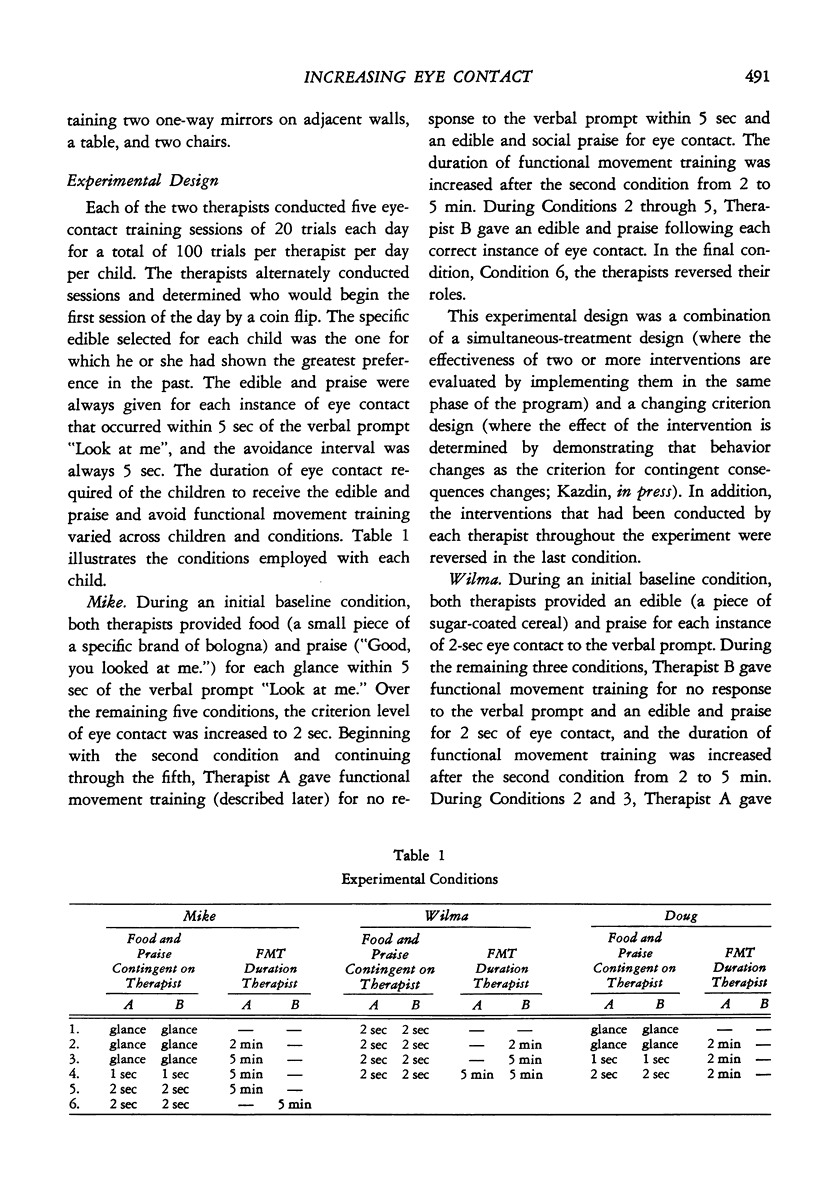
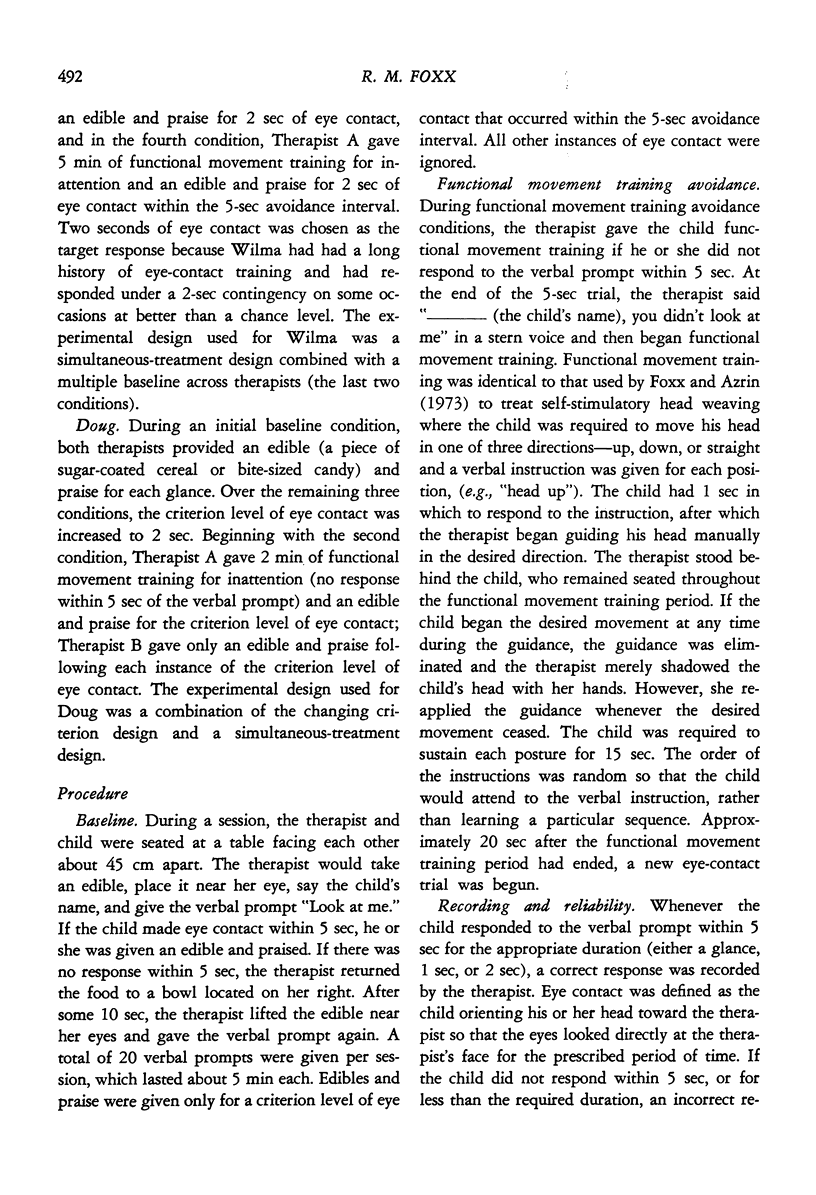
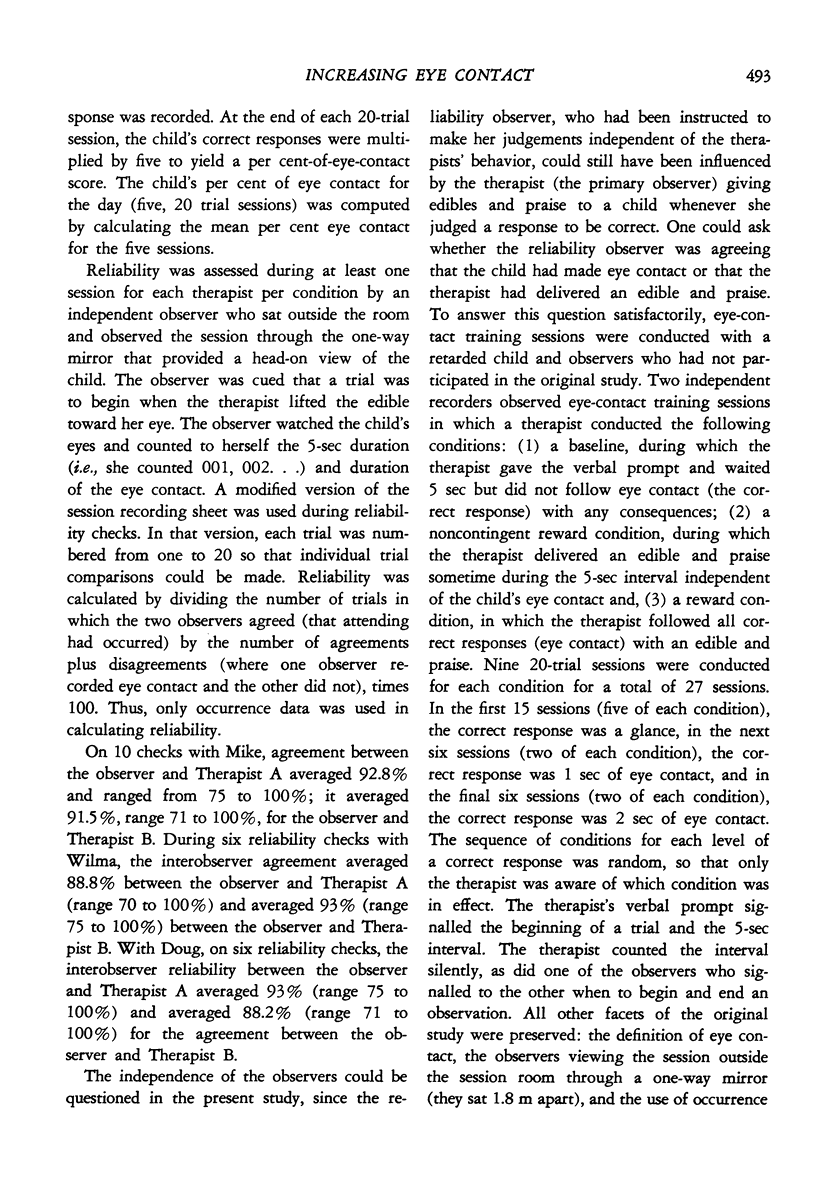
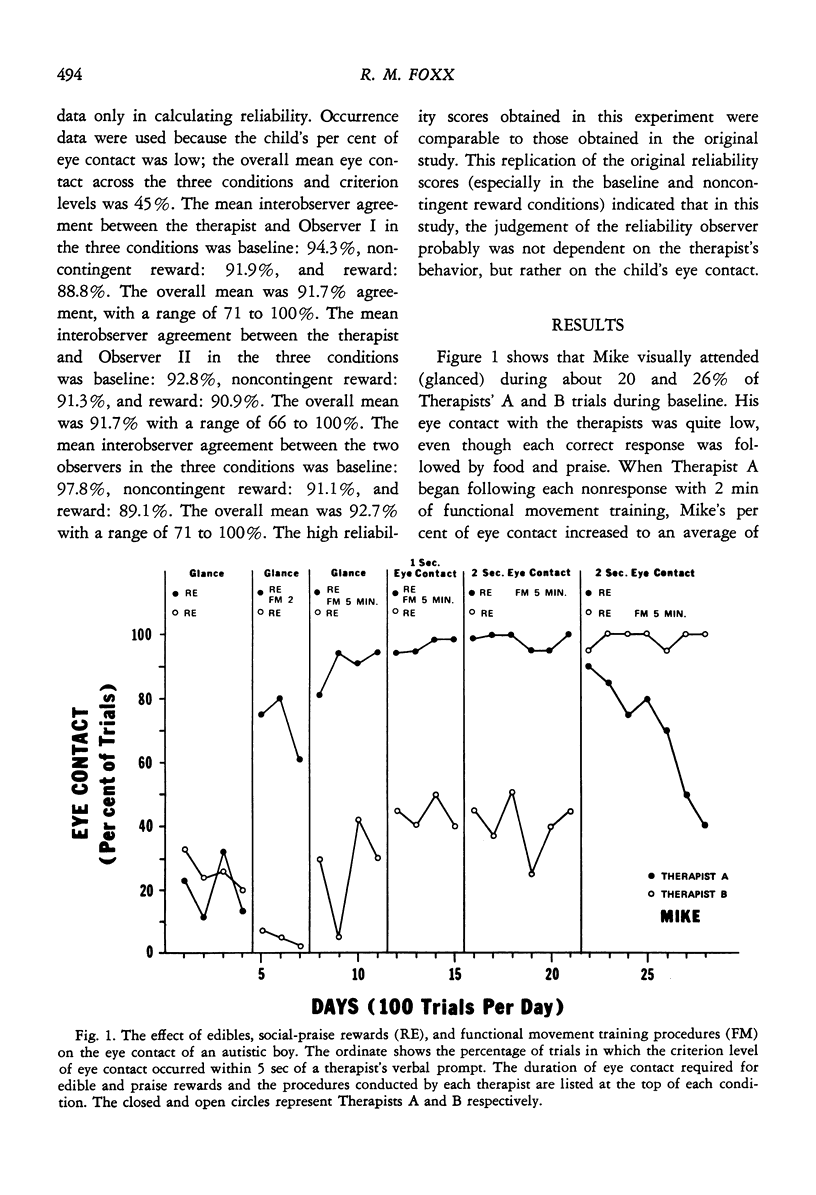
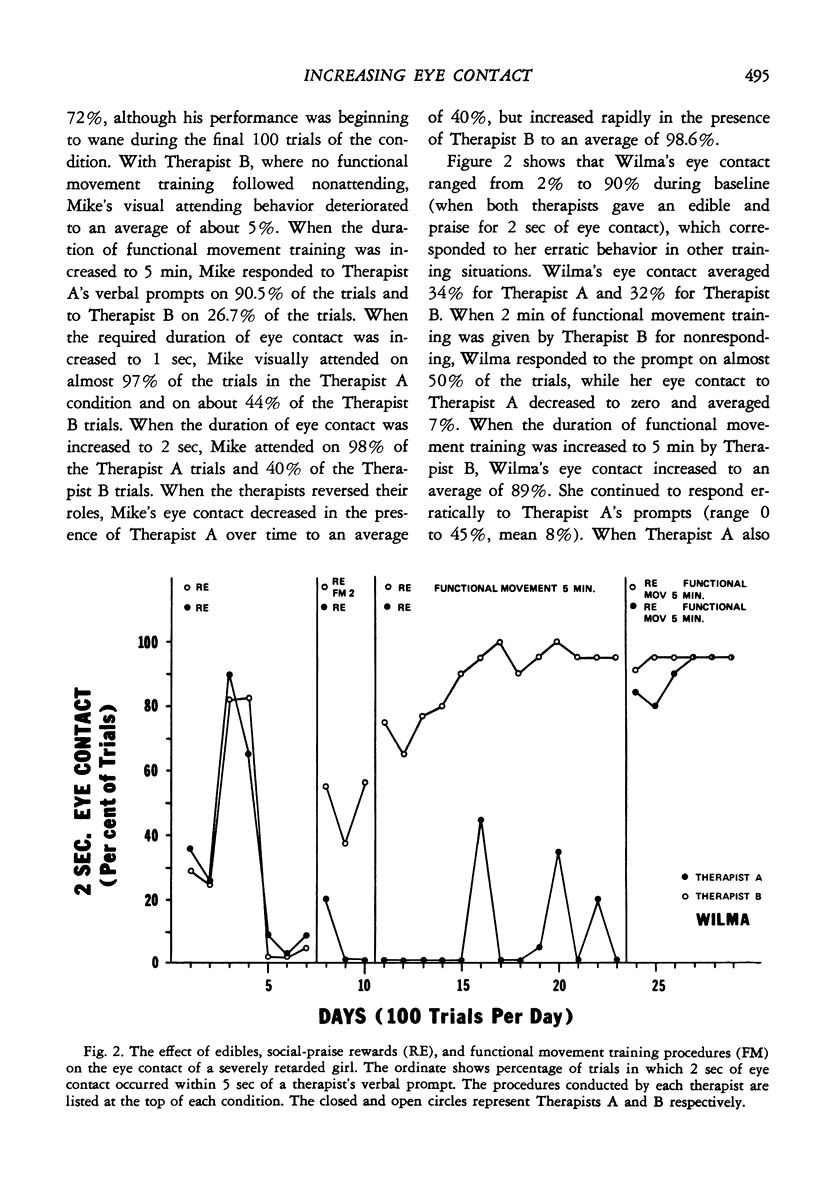
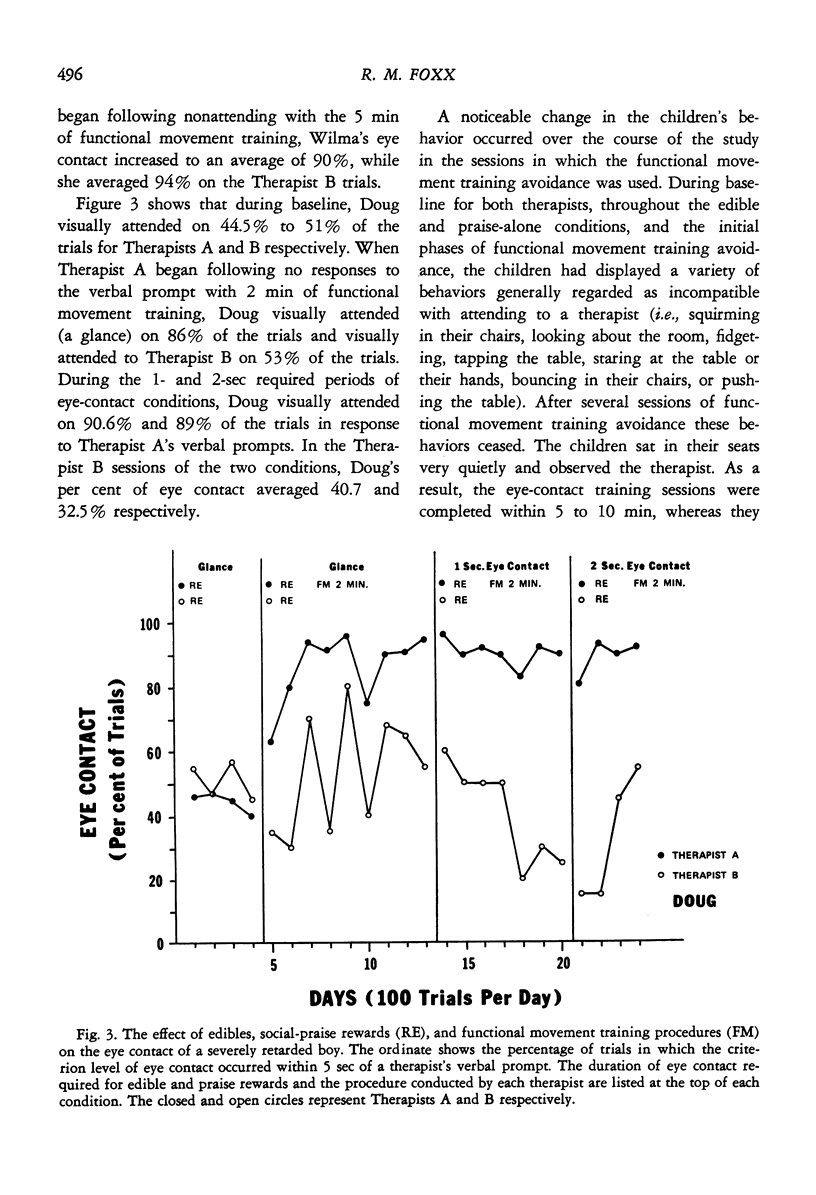
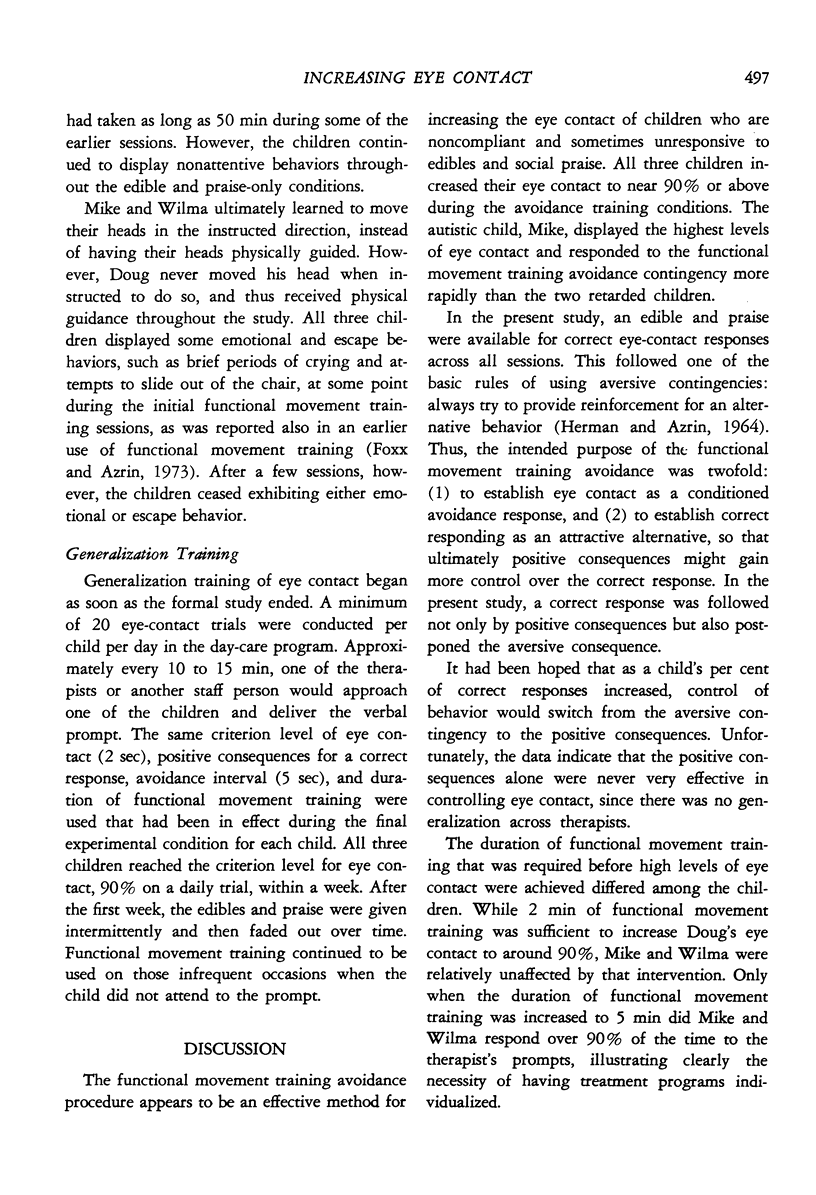
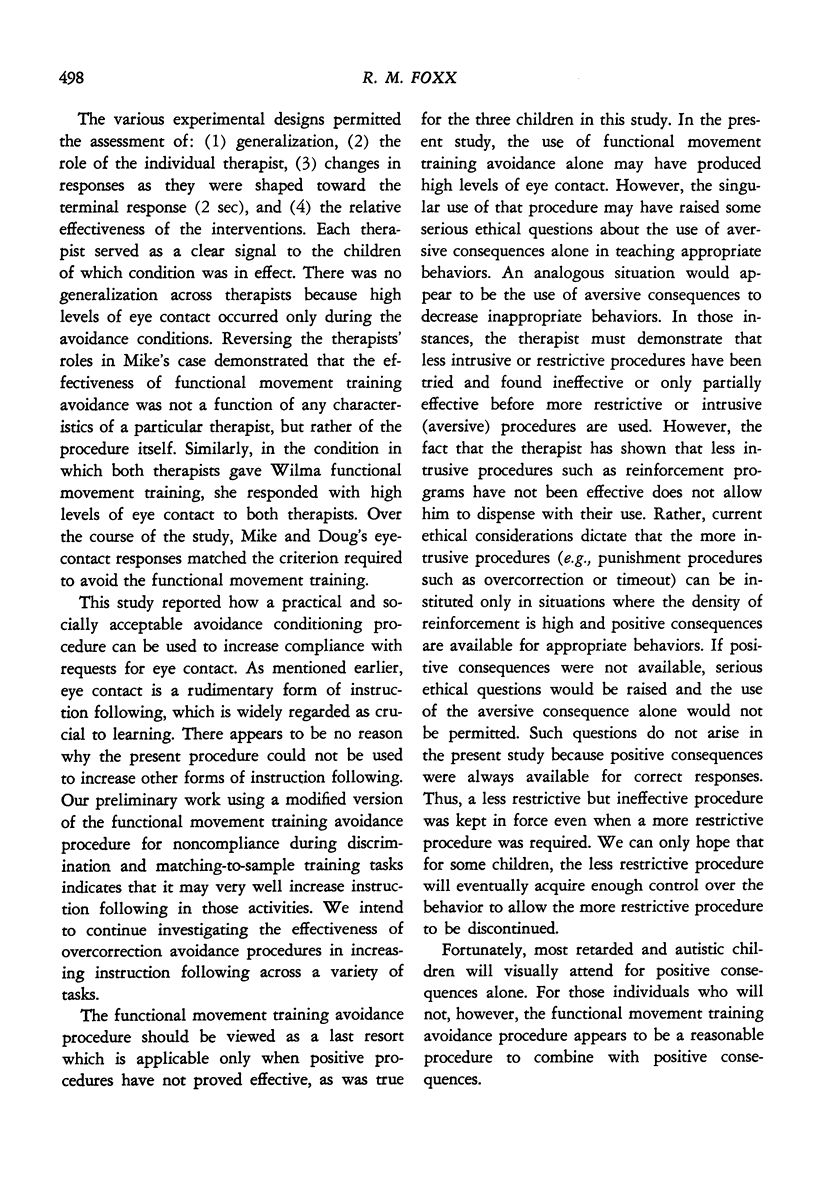
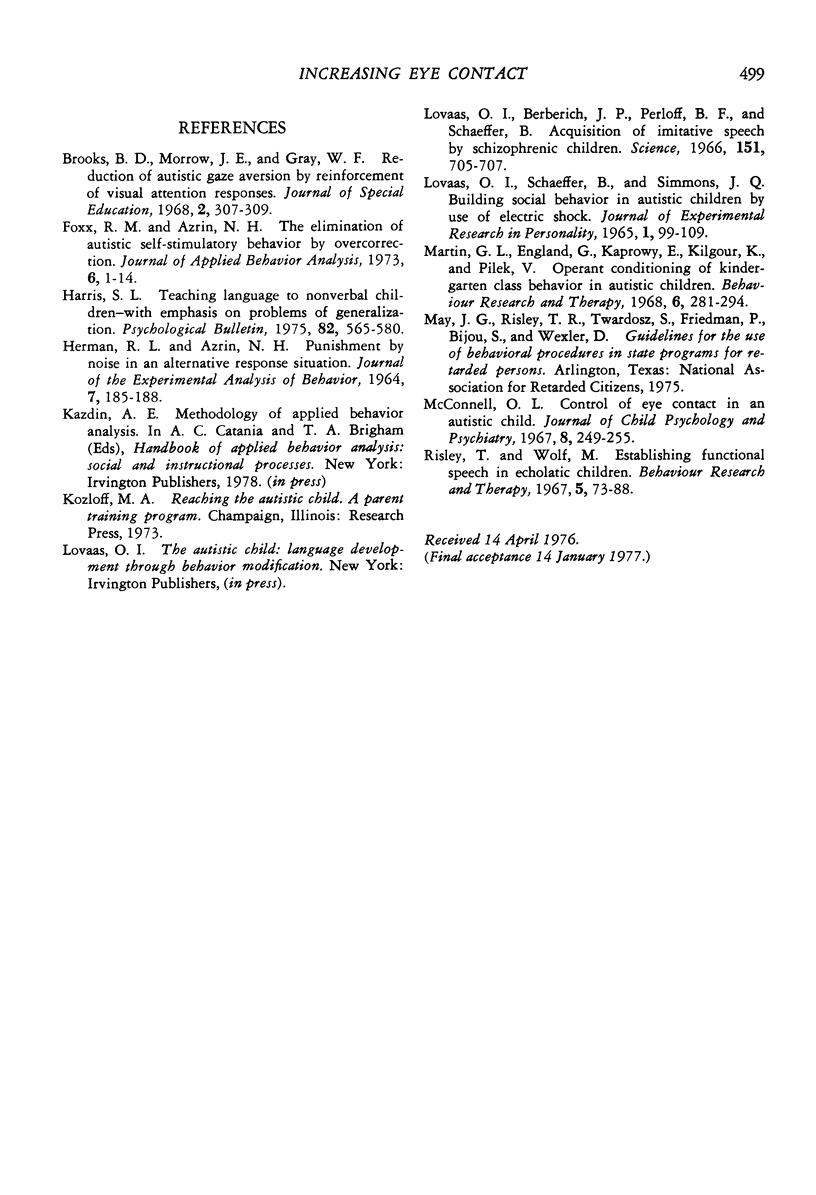
Selected References
These references are in PubMed. This may not be the complete list of references from this article.
- Foxx R. M., Azrin N. H. The elimination of autistic self-stimulatory behavior by overcorrection. J Appl Behav Anal. 1973 Spring;6(1):1–14. doi: 10.1901/jaba.1973.6-1. [DOI] [PMC free article] [PubMed] [Google Scholar]
- HERMAN R. L., AZRIN N. H. PUNISHMENT BY NOISE IN AN ALTERNATIVE RESPONSE SITUATION. J Exp Anal Behav. 1964 Mar;7:185–188. doi: 10.1901/jeab.1964.7-185. [DOI] [PMC free article] [PubMed] [Google Scholar]
- Harris S. L. Teaching language to nonverbal children--with emphasis on problems of generalization. Psychol Bull. 1975 Jul;82(4):565–580. doi: 10.1037/h0076903. [DOI] [PubMed] [Google Scholar]
- Lovaas O. I., Berberich J. P., Perloff B. F., Schaeffer B. Acquisition of imitative speech by schizophrenic children. Science. 1966 Feb 11;151(3711):705–707. doi: 10.1126/science.151.3711.705. [DOI] [PubMed] [Google Scholar]
- Martin G. L., England G., Kaprowy E., Kilgour K., Pilek V. Operant conditioning of kindergarten-class behavior in autistic children. Behav Res Ther. 1968 Aug;6(3):281–294. doi: 10.1016/0005-7967(68)90062-4. [DOI] [PubMed] [Google Scholar]
- Risley T., Wolf M. Establishing functional speech in echolalic children. Behav Res Ther. 1967 May;5(2):73–88. doi: 10.1016/0005-7967(67)90001-0. [DOI] [PubMed] [Google Scholar]


